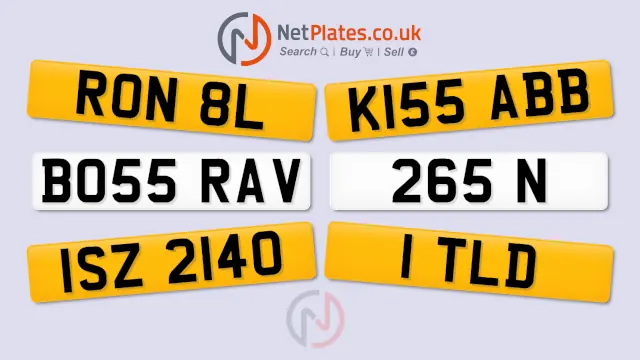Behind our success in selling private number plates lies an assessment with five key factors, in which we research the value of what you're intending to sell, and provide you with an expert valuation. Our valuations are totally free, and they come with absolutely no obligation. So you've nothing to lose in applying for one via our Sell a Plate page. If you're happy to sell at our suggested price, we can list your plate as available to a broad audience. You can change the amount for which you wish to sell as any time. We understand that the market can change, and we're happy to facilitate any response you have to that.
When someone expresses interest, a member of our friendly, professional team will be in touch. You remain in full control, and you're at liberty to accept or decline the transaction.
If your plate sells, you won't pay any charges or commission, and you'll receive the full amount agreed at the point where you approved the transaction. The buyer pays our commission.
But how do we ensure that your valuation is accurate?
Your Valuation
Here are some of the main factors we take into account when assessing the market value of your plate...
FACTOR 1
Meaning of The Plate
The fundamental factor in the world of personalised number plates is what the registration means to the purchaser. Because this factor is so central to the market, it's the single most important element in our assessment of the registration's value. Some plates have a crystal clear meaning, to which many people can relate. There are numerous subdivisions to the meaning of a plate. It may, for example, carry a set of common initials. It may instantly suggest a common first name - whether female or male. It may incorporate a personality trait or a hobby, which will be relevant to a wide array of people.
Of course, not every plate is a "global eyecatcher", but that doesn't mean it won't have value. Some plates may be relevant only to a very small section of the community. But if it's a great match with what that minority are looking for, they may still be prepared to pay a significant premium. This is where experience comes in. NetPlates is staffed by experts and enthusiasts, and the management - trading since 2010 - are almost always on site. NetPlates' intricate knowledge of the pockets of likely interest, from localised to widespread, enables us to determine the level of meaning your plate possesses. GBut as a general rule, the more recognisable the meaning of your plate, the greater its value more valuable it's likely to have.
FACTOR 2
Style of The Plate
We also take into account the style or type of number plate. Dateless plates (e.g. ABC 123) tend to be the most valuable, followed by suffix (e.g. ABC 123D), then prefix plates (e.g. A123 BCD), and finally new-style plates (e.g. AB12 CDE). Although this is the general rule, it can easily be the case that the meaning of the plate, as previously documented, subordinated the type of plate. That is, a suffix plate with a very strong and widely recognisable meaning, would likely be worth more than a dateless plate with only a vague or minimal meaning.
FACTOR 3
Age of The Plate
Number plates acquire additional presige with age. I wish I could say the same for myself... With all else like for like, the older the number plate, the more valuable it's likely to be. To give a quick example of how this would work in practice, NP 1 and 1 NP are both dateless plates. However, NP 1 is much older, dating back to the 1920's. Accordingly, NP 1 is more valuable than 1 NP.
This is another area in which NetPlates is able to leverage its enormous experience, ascertaining the age of a plate even when it's dateless, and devoid of the identifiers inherent in suffic, prefix and new-style registrations.
FACTOR 4
Number of Characters
Generally, the fewer characters a plate contains, the more valuable it is. But once again, another feature of the registration could have a greater influence on the overall value. For example, the meaning of the plate could be widely acknowledge. So even if the registration has a low character count, it could be trumped for value by a stand-out combination of characters, such as K1 NGS, or COM 1C - which spell instantly-recognisable words.
At NetPlates, we're always able to assess a plate's features in combination, to determine a realistic value.
FACTOR 5
Alternative Options
The more unique the plate, the more valuable it's likely to be. The critical issue here is how difficult it would be to find an alternative. If there are many similar plates, buyers have a choice, and for the seller at least, that negatively affects the dynamics of supply and demand. If, on the other hand, a registration is very difficult to replace, the seller can command a higher return.
With all of the above said, some elements of valuing a number plate are less easy to quantify, and can perhaps best be attributed to being in the business for many years, watching the market, participating in auctions, and simply being involved in a very high volume of registration transactions. We promise that when we value your registration, we'll be both fair and as accurate as we possibly can. One of the key elements in our growth has been word of mouth, and on that basis we never forget that your opinion of our service counts. We therefore have both the ability and the impetus to deliver on your behalf. So give us a try. See if we can find that magical sweet spot which enables your plate to sell quickly, at a price you're happy with...






